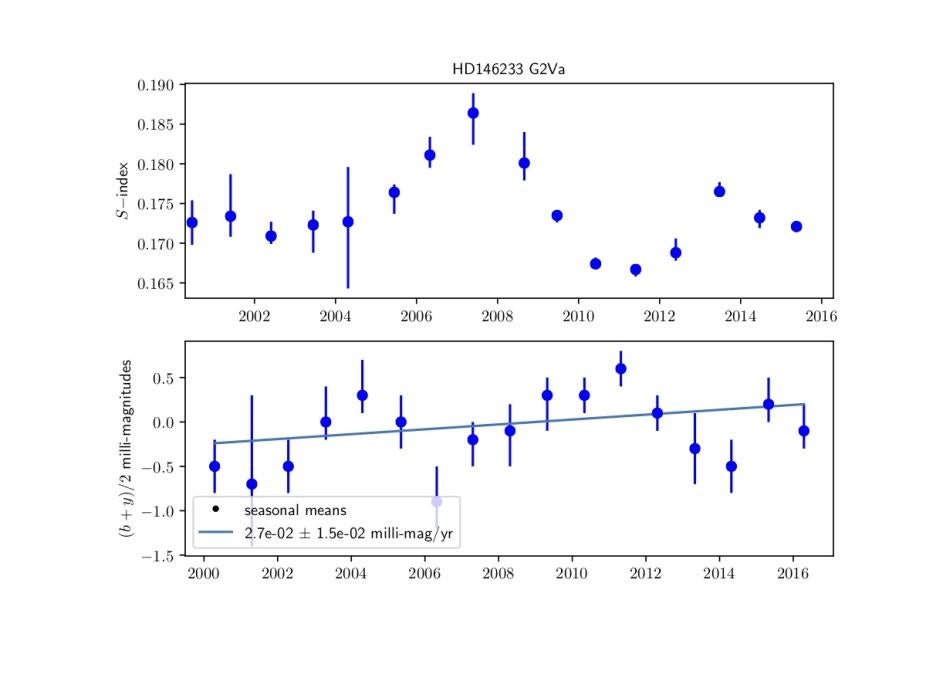Publication Name: ApJ; First HAO Author's Name: Philip Judge
Recently published, precise stellar photometry of 72 Sun-like stars obtained at the Fairborn Observatory between 1993 and 2017 is used to set limits on the solar forcing of Earth’s atmosphere of ±4.5 W m−2 since 1750. This compares with the +2.2 ± 1.1 W m−2 IPCC estimate for anthropogenic forcing.

Seasonally averaged data for the CaII“S-index” and for the average magnitudes of the Strömgrenbplusy filters are shown for the star 18 Sco (HD146233) whose properties are closest to those of the Sun. The straight line in the lower panel shows a least-squares fit of a linear function to the photometric data,with the uncertainties shown as listed in Radick et al. (2018). The gradient is 28±15 micro-magnitudes per year.
Three critical assumptions are made. In decreasing order of importance they are: (a) most of the brightness variations occur within the average time-series length of ≈ 17 years; (b) the Sun seen from the ecliptic behaves as an ensemble of middle-aged solar-like stars; and (c) narrow-band photometry in the Strömgren b and y bands are linearly proportional to the total solar irradiance. Assumption (a) can best be relaxed and tested by obtaining more photometric data of Sun-like stars, especially those already observed. Eight stars with near-solar parameters have been observed from 1999, and two since 1993.